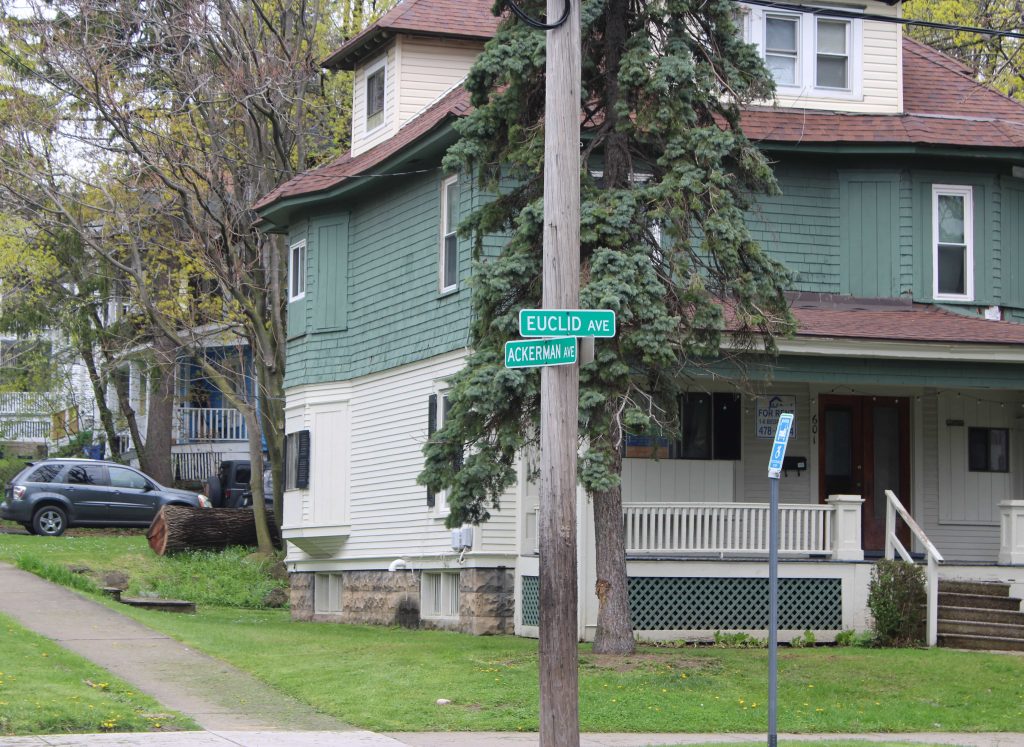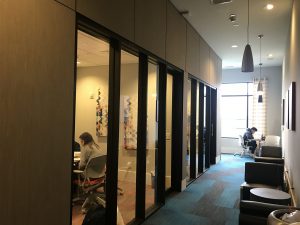Luxury student housing forces change on historic University Neighborhood
Luxury student housing forces change on historic University Neighborhood

In the Eastside neighborhood adjacent to Syracuse University, the population is changing. There’s a slight uptick in vacancies, Southeast University Neighborhood Association President Michael Stanton reported at an annual meeting in early April. Landlords are downsizing their property stock. The interest in the neighborhood, at least from students, isn’t what it used to be.
They’ve moved down the street, on the other end of the university, and into some of the more than several thousand new beds in various different luxury student apartment buildings, leaving behind a neighborhood strewn with 100-year-old Craftsman houses without a granite countertop in sight.
Stretching from Comstock Avenue to Westcott Street to the east and west, and north-south from Clarendon Street to Kensington Road, the University Neighborhood and its main artery, Euclid Avenue, have long been the capital of off-campus housing for Syracuse University students. As the luxury apartments shift the local real estate market, the neighborhood is once again in flux, only this time in an unknown direction.
For local landlords who operated the same properties the same way for decades, the new apartments have hurt their business. Their properties aren’t renting as fast, some say. More maintenance is required to be price competitive with the apartments. A few landlords are even offloading properties farthest away from campus that are the hardest to rent.
According to the 2010 Census, the population for ZIP Code 13210, which covers all of the University Neighborhood, was 27,606. Though the 2020 Census will reveal exact figures, government estimates do not anticipate the neighborhood population increasing.
University neighborhood landlords said to avoid vacancies they’d likely open up some houses to Section 8 housing, which serves low-income tenants who receive government subsidized rent.
But Syracuse Common Councilor Tim Rudd said a smaller student population could benefit the city. He referenced Barry Park, an area more than a mile from SU’s campus that up until a few years ago was flooded with students. These days, the neighborhood around Barry Park is slowly shifting back to owner-occupied housing.
Even if landlords do try to sell off some houses, it could create more quality, affordable housing, Rudd said. Some properties could get turned over to the city’s Land Bank, which takes abandoned properties and re-sells them to financially stable buyers.
“In theory you could get normal Syracusans to rent there more easily,” he said.
Jeremy DeChario is one of those “normal Syracusans.” The general manager of the Syracuse Cooperative Market lives within walking distance of the Kensington Road grocery, as well as the Westcott Community Center, a barbershop, a music venue, and several bars and restaurants in the nearby Westcott Business District.
Six years ago, DeChario and his partner bought a house in the neighborhood, and recently became parents. DeChario, out for a walk last month, said he was stopped by three friends excited to meet his newborn son. A housing shift could encourage more young families to move to the area, he said.
“There’s a pretty big baby boom in the neighborhood right now, which is pretty excellent,” DeChario said. “Part of that is the amenities that the neighborhood offers.”
The other draw is the community itself, a group of people “genuinely interested in making Syracuse a better place,” he said. And that includes everyone, from longtime residents to DeChario’s young family and even Syracuse students.
Junior Violet Cuerdon currently lives on Euclid and often goes to parties throughout the neighborhood. She said her and her group of friends all live in the neighborhood and never considered the luxury apartment. They are a part of the contingent of students that Syracuse landlords believe will continue to occupy the neighborhood regardless of an increase in luxury apartments.
“Everybody knows about Euclid,” Cuerdon said. “And the social scene of living on Euclid is something that is a huge part of Syracuse as a student-life aspect.”
Longtime residents live among this social scene, but do not want it getting any larger. A 2019 proposal to build a new apartment building on Westcott Street sputtered after neighbors criticized the plan for lack of parking. And at the SEUNA meeting in April, Syracuse Mayor Ben Walsh announced that the city had struck down another new apartment proposal on East Genesee Street.
Still, changes could come to the University Neighborhood. Rezone Syracuse, an initiative to update the city’s zoning laws, would push Westcott’s business district into the University Neighborhood and prevent landlords from partitioning houses into apartments. But this initiative has taken longer than anticipated. It was supposed to happen two years ago. And the year after that. Rudd hopes it will happen this year instead, but he’s not positive it will.
While the city debates zoning laws and students consider new housing options, longtime residents like former SEUNA president Harry Lewis watch for what will be the next incarnation of the University Neighborhood. Sixty years ago, he bought a house on Lancaster Avenue to raise his family near students, but not among them. Now his neighbors are some renters and some empty houses, and Lewis waits for the neighborhood to turn over again.








